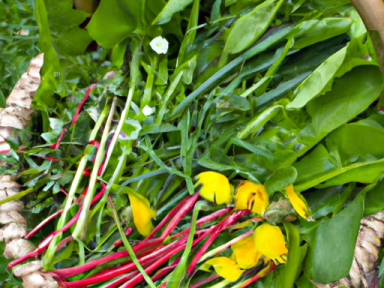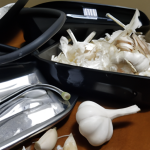
Spring Foraging: Wild Edibles
Spring is a beautiful time of year, filled with blooming flowers, warming temperatures, and the promise of new beginnings. But it’s also a crucial time for those who value self-reliance and preparedness. As we witness the changing world around us, it becomes increasingly clear that being able to sustain ourselves without relying on a fragile and uncertain food system is not just a luxury, but a necessity.
The Importance of Foraging
Foraging is the practice of gathering wild food from nature’s pantry. It’s an essential skill that has been lost in our modern world of convenience and supermarkets. But as we face the uncertainty of the future, knowing how to identify and harvest wild edibles becomes a powerful tool in our self-reliance arsenal.
Foraging allows us to connect with nature in a deeply meaningful way. It teaches us to be observant and in tune with our surroundings. It reminds us that the Earth provides us with everything we need to survive, if only we have the knowledge and skills to access it.
Identifying Wild Edibles
Before embarking on a foraging adventure, it’s important to educate ourselves on the plants that grow in our area and their edible properties. While there are countless wild edibles to discover, here are a few common ones to get you started:
- Dandelion – Known for its bright yellow flowers, dandelion is a powerhouse of nutrition. Its leaves can be added to salads or cooked like spinach, while its roots can be roasted and used as a coffee substitute.
- Wild Garlic – Often found in wooded areas, wild garlic has a distinctive smell and taste. Its leaves can be used as a flavorful addition to salads or soups, and the bulbs can be cooked and eaten like regular garlic.
- Stinging Nettle – Despite its name, stinging nettle is a highly nutritious plant. The leaves can be cooked and used in a variety of dishes, and the dried leaves can even be used to make herbal tea.
- Ramps – Ramps, also known as wild leeks, are a popular spring delicacy. Their leaves can be sautéed, pickled, or used in place of onions or garlic in recipes.
- Wild Strawberries – These tiny, flavorful berries are a delightful find during a foraging expedition. Enjoy them fresh or use them in jams, pies, or desserts.
Harvesting Wild Edibles
When it comes to harvesting wild edibles, there are a few key guidelines to keep in mind:
- Start small – Begin by foraging in small quantities until you gain confidence in your identification skills.
- Leave no trace – Only take what you need and be mindful of the impact your harvest has on the environment.
- Proper preparation – Some wild edibles require special preparation techniques to remove toxins or enhance flavor. Educate yourself on the proper methods for each plant you harvest.
- Respect regulations – Be aware of any local regulations regarding foraging and follow them accordingly.
- Learn from experts – Seek out books, online resources, and local foraging groups to deepen your knowledge and learn from experienced foragers.
Conclusion
Spring foraging is not just a fascinating hobby or a way to enjoy the outdoors. It is a critical skill that empowers us to take control of our own food security. By learning to identify and harvest wild edibles, we become less reliant on a system that is vulnerable to disruption. So take action, prepare yourself, and embrace the abundance that nature has to offer.



GIPHY App Key not set. Please check settings